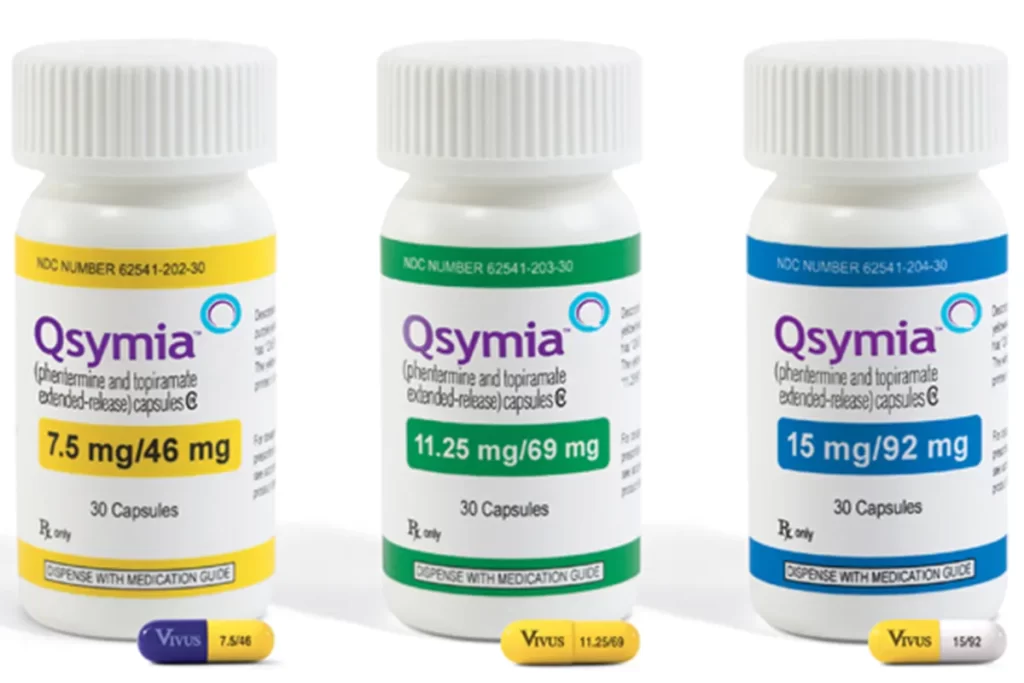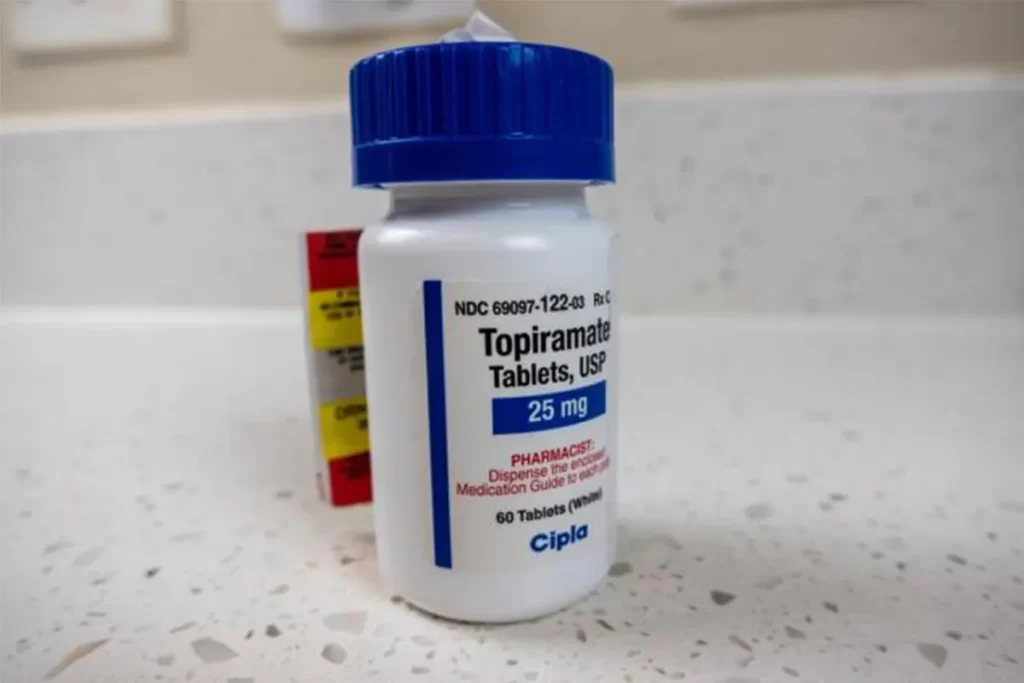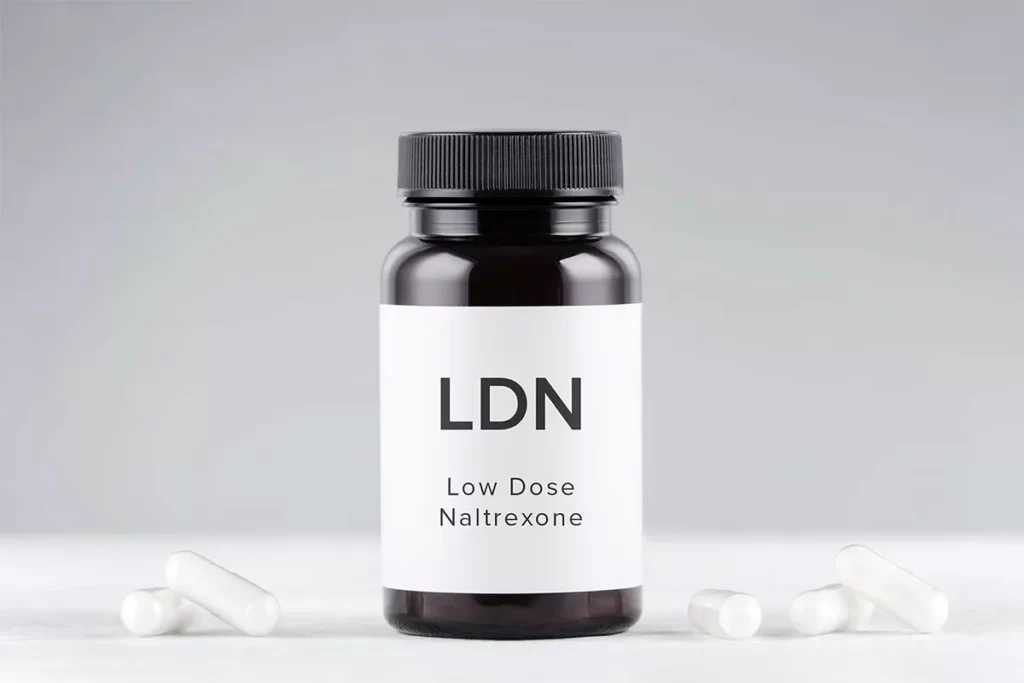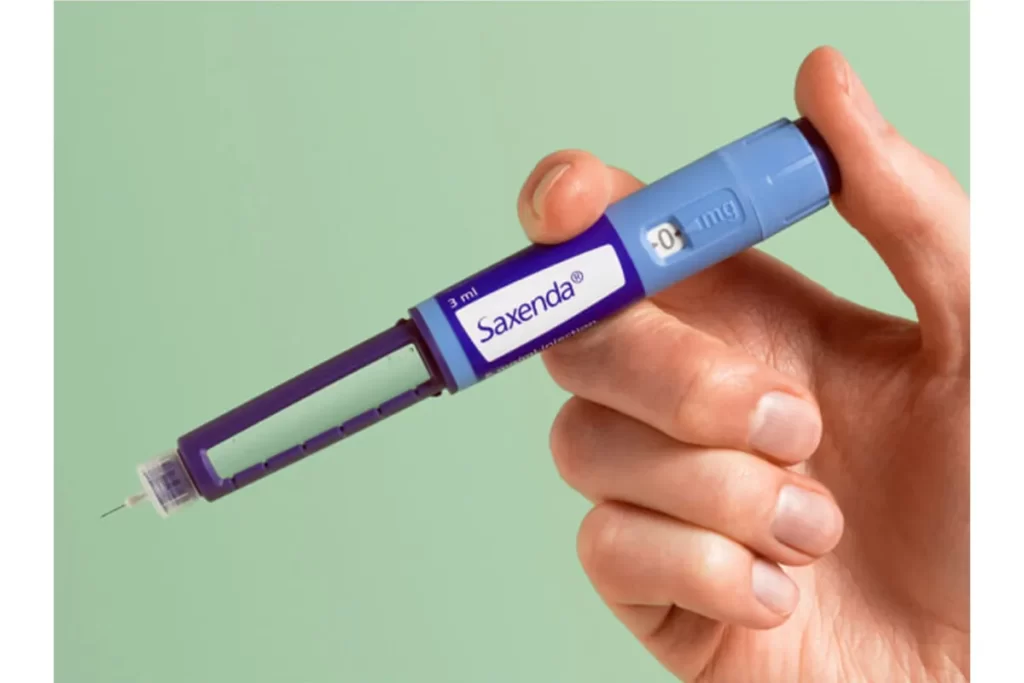GLP-1 Weight Loss Saxenda: Efficacy, Cost, and Comparisons
-
 Written by
Michael J. Ormsbee
Written by
Michael J. Ormsbee
- LAST UPDATED November 16, 2023
In the realm of weight management, GLP-1 receptor agonists have emerged as a significant player, offering a new perspective on obesity treatment. These medications, functioning by mimicking the glucagon-like peptide-1 (GLP-1) hormone, play a crucial role in regulating appetite and calorie intake. Among these, Saxenda (liraglutide) stands out as a prominent medication, specifically designed for weight loss. Saxenda’s mechanism involves enhancing the feeling of fullness, leading to reduced food intake and, consequently, weight loss. This approach to managing obesity is particularly noteworthy as it diverges from traditional methods, focusing instead on hormonal regulation. As we delve deeper into the world of GLP-1 weight loss Saxenda, it’s essential to understand its unique position in the landscape of weight management solutions. Saxenda’s effectiveness, coupled with a comprehensive approach to diet and exercise, offers a promising avenue for those struggling with obesity, marking a significant step forward in the journey towards healthier living.
Comparing GLP-1 Weight Loss Saxenda with Other GLP-1 Medications
In the journey of GLP-1 weight loss, Saxenda has become a key player. However, understanding its position requires a comparison with other GLP-1 medications. This section delves into how GLP-1 weight loss Saxenda stands against its counterparts, particularly Ozempic and Wegovy, in terms of active ingredients, usage, effectiveness, dosing frequency, and side effects.
Saxenda vs. Ozempic
| Aspect | Saxenda (Liraglutide) | Ozempic (Semaglutide) |
|---|---|---|
| Active Ingredient | Liraglutide | Semaglutide |
| Usage | Primarily for weight loss in adults and children with certain BMI criteria | Mainly for type 2 diabetes management, also used for weight loss |
| Effectiveness | Average weight loss of 5-10% of body weight over a year | Average weight loss of 12-15% of body weight over 68 weeks |
| Dosing Frequency | Daily injection | Weekly injection |
| Side Effects | Nausea, diarrhea, constipation, risk of thyroid tumors | Similar side effects, with a lower risk of gastrointestinal issues |
In the context of GLP-1 weight loss Saxenda and Ozempic offer different benefits. Saxenda is more focused on weight management, while Ozempic, although effective for weight loss, is primarily used for diabetes control.
Saxenda vs. Wegovy
| Aspect | Saxenda (Liraglutide) | Wegovy (Semaglutide) |
|---|---|---|
| Active Ingredient | Liraglutide | Semaglutide |
| Usage | Weight loss in adults and children with obesity or overweight with weight-related conditions | Weight loss in adults with obesity or overweight with weight-related conditions |
| Effectiveness | Average weight loss of 5-10% of body weight over a year | Slightly higher average weight loss compared to Saxenda |
| Dosing Frequency | Daily injection | Weekly injection |
| Side Effects | Nausea, diarrhea, constipation, risk of thyroid tumors | Similar side effects, with some differences in frequency and intensity |
When comparing GLP-1 weight loss Saxenda with Wegovy, the key difference lies in the dosing frequency and slight variations in effectiveness. Both are highly effective for weight management, but Wegovy offers a more convenient dosing schedule.
While exploring GLP-1 weight loss Saxenda, it’s crucial to consider individual health profiles, lifestyle, and specific medical needs. Saxenda, with its unique properties, stands as a viable option for many, but understanding its differences with other GLP-1 medications like Ozempic and Wegovy can guide patients and healthcare providers in making informed decisions.
Setting Realistic Weight Loss Expectations with GLP-1 Weight Loss Saxenda
Understanding the potential of GLP-1 weight loss Saxenda is crucial for those considering it as a weight loss solution. This section aims to set realistic expectations by discussing the average weight loss with Saxenda and exploring real-world experiences and clinical trial results.
Average Weight Loss on Saxenda
When embarking on a weight loss journey with GLP-1 weight loss Saxenda, it’s important to have realistic expectations about the results. Clinical trials and user reports indicate that while individual results vary, there are common trends in weight loss outcomes.
In the first month of using GLP-1 weight loss Saxenda, users might not see significant weight loss as the body adjusts to the medication. The initial weeks often involve a gradual increase in dosage, allowing the body to adapt to the medication with minimal side effects. During this period, weight loss can be modest.
As the treatment progresses, particularly from the second month onwards, users typically report more noticeable weight loss. On average, individuals using GLP-1 weight loss Saxenda can expect to lose approximately 5% of their body weight after several months of consistent use, in conjunction with a balanced diet and regular exercise. It’s important to note that Saxenda works best when paired with lifestyle changes.
By the third to sixth month, the weight loss tends to stabilize, and users often see a consistent pattern in their weight reduction. Some individuals report losing up to 10% of their initial body weight, especially when Saxenda is combined with significant lifestyle modifications.
It’s crucial to understand that GLP-1 weight loss Saxenda is not a quick-fix solution but a tool that aids in gradual and sustainable weight loss. Regular consultations with healthcare providers are essential to monitor progress and adjust the treatment plan as necessary.
Saxenda Weight Loss Reviews
Real-world experiences with GLP-1 weight loss Saxenda offer valuable insights into its effectiveness. These reviews, combined with clinical trial results, paint a comprehensive picture of what users can expect.
Clinical Trials: In controlled environments, participants using GLP-1 weight loss Saxenda showed an average weight loss of around 5-10% of their body weight over a year. These trials underscore the importance of combining Saxenda with lifestyle changes for optimal results.
User Experience 1: A user reported a gradual but steady weight loss, totaling around 8% of their body weight over six months. They emphasized the role of a balanced diet and regular exercise in enhancing the effects of GLP-1 weight loss Saxenda.
User Experience 2: Another individual experienced significant weight loss in the initial months but noted a plateau after the fourth month. This highlights the variability in how individuals respond to GLP-1 weight loss Saxenda.
User Experience 3: A user with a high initial BMI reported a more pronounced weight loss, suggesting that starting weight can influence the degree of weight loss with Saxenda.
User Experience 4: Some users noted minimal side effects, attributing their success to strict adherence to the prescribed dosing and lifestyle recommendations.
User Experience 5: A few users did not see significant weight loss, indicating that GLP-1 weight loss Saxenda may not be equally effective for everyone. These cases emphasize the importance of personalized medical advice.
While GLP-1 weight loss Saxenda has been effective for many, individual results vary. It’s important for users to maintain realistic expectations, adhere to prescribed dosages, and commit to lifestyle changes for the best outcomes. Regular follow-ups with healthcare providers are crucial to track progress and make necessary adjustments.
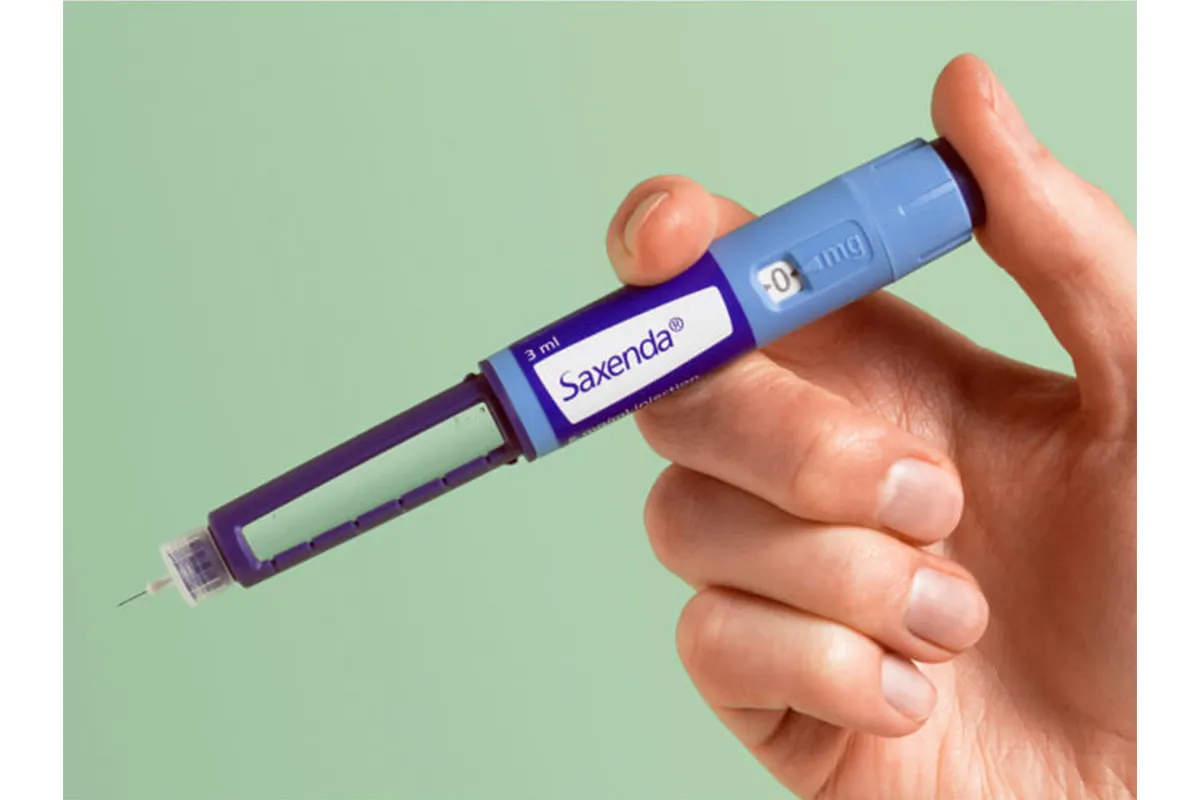
Exploring Saxenda for Weight Loss in the GLP-1 Weight Loss Saxenda Context
The journey of weight loss often leads to various options, and GLP-1 weight loss Saxenda has become a significant choice for many. This section delves into why Saxenda, among other injections, is considered one of the best for weight loss and explores the role of its active ingredient, liraglutide, in facilitating weight reduction.
Best Injection for Weight Loss
In the landscape of weight loss treatments, GLP-1 weight loss Saxenda has emerged as a leading option. When evaluating Saxenda against other weight loss injections, several factors come into play, including effectiveness, ease of use, and side effect profile.
Effectiveness: GLP-1 weight loss Saxenda has been clinically proven to aid in significant weight loss. Studies show that users can expect to lose about 5-10% of their body weight, a notable amount compared to other injections available in the market.
Ease of Use: Saxenda’s daily injection regimen, while more frequent than some alternatives, is designed to be user-friendly. The pre-filled pen makes self-administration relatively straightforward, an important consideration for long-term treatment adherence.
Side Effects: While GLP-1 weight loss Saxenda shares common side effects with other weight loss injections, such as nausea and diarrhea, its safety profile is well-established. The gradual dose escalation helps minimize these effects, making it a suitable option for many.
Patient Suitability: Saxenda’s approval for use in adults and certain pediatric populations with obesity makes it a versatile option. Its efficacy in a broad range of patients adds to its appeal as a preferred weight loss injection.
In the context of GLP-1 weight loss Saxenda, it stands out for its balance of efficacy, safety, and user-friendliness, making it a top choice for many seeking medical weight loss solutions.
Liraglutide’s Role in Weight Loss
The active ingredient in GLP-1 weight loss Saxenda, liraglutide, plays a pivotal role in its effectiveness. Understanding how liraglutide contributes to weight loss is key to appreciating why GLP-1 weight loss Saxenda is a valuable tool in weight management.
Appetite Suppression: Liraglutide mimics GLP-1, a hormone that regulates appetite. By enhancing the feeling of fullness, GLP-1 weight loss Saxenda helps reduce caloric intake, a fundamental aspect of weight loss.
Glycemic Control: Liraglutide improves blood sugar control, which is beneficial for weight management, especially in individuals with type 2 diabetes. This control can reduce cravings and binge eating, contributing to a steady weight loss journey.
Metabolic Impact: Beyond appetite regulation, GLP-1 weight loss Saxenda impacts metabolic functions. It slows gastric emptying, contributing to prolonged satiety and reduced food consumption.
Fat Storage: Research suggests that liraglutide may influence how the body stores and uses fat, although these effects are still being explored.
The role of liraglutide in GLP-1 weight loss Saxenda is multifaceted, addressing various aspects of weight loss from appetite suppression to metabolic changes. This comprehensive approach is what makes GLP-1 weight loss Saxenda an effective option for those struggling with obesity or overweight, offering a path to a healthier lifestyle.
Navigating Dietary Considerations with GLP-1 Weight Loss Saxenda
For those embarking on a weight loss journey with GLP-1 weight loss Saxenda, understanding the dietary considerations is crucial. This section focuses on the foods to avoid while using Saxenda to ensure optimal results and enhance the effectiveness of this weight loss treatment.
Foods to Avoid While on Saxenda
When using GLP-1 weight loss Saxenda, certain dietary changes can significantly impact the effectiveness of the treatment. It’s not just about reducing calorie intake; it’s also about choosing the right types of foods to support your weight loss journey.
High-Fat Foods: Foods high in saturated and trans fats should be limited while using GLP-1 weight loss Saxenda. These include fried foods, certain cuts of meat, full-fat dairy products, and processed snacks. High-fat foods can exacerbate gastrointestinal side effects like nausea and diarrhea, which are common with Saxenda.
Sugary Foods and Beverages: Reducing the intake of sugary foods and drinks is crucial. This includes sugary snacks, desserts, sodas, and fruit juices. Excessive sugar not only contributes to weight gain but can also lead to spikes in blood sugar levels, which GLP-1 weight loss Saxenda aims to stabilize.
Refined Carbohydrates: White bread, pasta, and other refined carbs can lead to rapid increases in blood sugar and are less satisfying, leading to overeating. Opting for whole grains can help maintain steady blood sugar levels and increase satiety, both of which are beneficial when using GLP-1 weight loss Saxenda.
Alcohol: Alcohol consumption should be moderated while on Saxenda. Alcohol can increase the risk of low blood sugar and may add unnecessary calories to your diet. Additionally, it can interact with Saxenda, increasing the risk of side effects.
High-Sodium Foods: Foods high in sodium, like processed and canned foods, can contribute to water retention and bloating. Reducing sodium intake is advisable to avoid these effects and support weight loss with GLP-1 weight loss Saxenda.
Artificial Sweeteners: While they may seem like a good alternative to sugar, some artificial sweeteners can disrupt the body’s ability to regulate blood sugar and might lead to cravings and overeating.
Strategies for Managing Side Effects of GLP-1 Weight Loss Saxenda
Effective management of side effects is crucial for those using GLP-1 weight loss Saxenda. This section provides insights into the common side effects associated with Saxenda and offers practical advice on how to manage or mitigate these effects, ensuring a smoother journey towards weight loss.
6 Common Side Effects of Saxenda and Management Strategies
GLP-1 weight loss Saxenda, like any medication, comes with potential side effects. Understanding these and knowing how to manage them can significantly improve the treatment experience.
Nausea: Nausea is a common side effect of GLP-1 weight loss Saxenda. To manage this, start with smaller doses and gradually increase as advised by your healthcare provider. Eating smaller, more frequent meals and avoiding fatty or spicy foods can also help.
Diarrhea: Diarrhea can occur when using GLP-1 weight loss Saxenda. Staying hydrated is crucial. Incorporating a diet rich in soluble fiber, such as oats and bananas, can help solidify stools. Avoiding high-fat and spicy foods is also recommended.
Constipation: To combat constipation, increase your intake of dietary fiber and fluids. Regular physical activity can also help maintain bowel regularity while using GLP-1 weight loss Saxenda.
Headaches: Headaches may occur when starting GLP-1 weight loss Saxenda. Staying well-hydrated, maintaining a regular sleep schedule, and managing stress can help alleviate this side effect.
Dizziness: If you experience dizziness, ensure you are adequately hydrated and eating regularly to maintain stable blood sugar levels. Stand up slowly from sitting or lying positions while on GLP-1 weight loss Saxenda.
Injection Site Reactions: To minimize reactions at the injection site, rotate the injection site with each dose of GLP-1 weight loss Saxenda. Keep the injection site clean and avoid injecting into areas that are tender, bruised, or hard.
It’s important to remember that while these strategies can help manage side effects, they do not replace professional medical advice. Regular check-ins with your healthcare provider are essential when using GLP-1 weight loss Saxenda. They can offer personalized advice and adjust your treatment plan if necessary, ensuring that Saxenda remains a safe and effective tool in your weight loss journey.
Navigating Accessibility and Affordability of GLP-1 Weight Loss Saxenda
Accessing and affording GLP-1 weight loss Saxenda can be a concern for many individuals seeking this treatment. This section delves into the various options available to obtain Saxenda either for free or at a reduced cost and discusses the pricing of Saxenda injections, offering tips to manage these expenses effectively.
How to Get Saxenda for Free or at Reduced Cost
The cost of GLP-1 weight loss Saxenda can be a significant barrier for many. However, there are several avenues to explore that can potentially reduce or even eliminate this cost.
Patient Assistance Programs: Many pharmaceutical companies, including the makers of GLP-1 weight loss Saxenda, offer patient assistance programs. These programs are designed to help those who are uninsured or underinsured access the medication they need. Eligibility often depends on income, insurance status, and other factors.
Insurance Coverage: While insurance coverage for GLP-1 weight loss Saxenda varies, it’s worth investigating your policy. Some insurance plans cover prescription weight loss medications under certain conditions. It’s advisable to contact your insurance provider to understand your coverage and any potential out-of-pocket costs.
Savings Cards and Coupons: The manufacturers of GLP-1 weight loss Saxenda often provide savings cards or coupons which can significantly reduce the cost. These savings programs are typically available through the medication’s official website or your healthcare provider.
Government Programs: In some regions, government health programs may cover GLP-1 weight loss Saxenda. This coverage can vary widely depending on your location and specific government health policies.
Charitable Organizations: Some non-profit organizations and charities offer assistance for medications like GLP-1 weight loss Saxenda. These can be particularly helpful for individuals who fall through the cracks of other assistance programs.
Saxenda Injection Price
The price of GLP-1 weight loss Saxenda injections can be daunting, but there are ways to manage these expenses.
Understanding the Cost: The cost of GLP-1 weight loss Saxenda can vary based on factors like geographical location, pharmacy, and dosage requirements. It’s important to get a clear understanding of the cost from your healthcare provider or pharmacist.
Comparing Prices: Prices for GLP-1 weight loss Saxenda can vary between pharmacies. It’s worth shopping around and comparing prices to find the most affordable option. Online tools and pharmacy comparison websites can be useful for this purpose.
Bulk Purchases: In some cases, purchasing a larger supply of GLP-1 weight loss Saxenda can reduce the overall cost. Discuss with your healthcare provider if this is a suitable option for you.
Financial Planning: For those who need to self-fund their GLP-1 weight loss Saxenda treatment, financial planning can be key. This might include setting aside a specific budget for medication or exploring flexible spending accounts (FSAs) or health savings accounts (HSAs) if available.
Alternative Medications: If GLP-1 weight loss Saxenda is prohibitively expensive, discuss with your healthcare provider about alternative medications. There might be other options available that are more cost-effective yet still meet your treatment needs.
While the cost of GLP-1 weight loss Saxenda can be high, there are multiple strategies to explore that can make this medication more accessible and affordable. It’s important to research and utilize the resources available, and always consult with healthcare professionals for guidance tailored to your specific situation.

FAQs about GLP-1 Weight Loss Saxenda
How much weight can you lose in a month with Saxenda?
The amount of weight loss with Saxenda can vary significantly from person to person, depending on various factors such as diet, exercise, and individual metabolic rate. Clinical studies have shown that, on average, individuals using Saxenda in conjunction with a reduced-calorie diet and increased physical activity can expect to lose approximately 4-5% of their body weight over a period of 3-6 months. This translates to an average of 1-2 pounds per week, which can be higher or lower in the first month. It's important to note that Saxenda works gradually, and weight loss in the first month can be a mix of water and fat loss. The key to success with Saxenda is consistency in its use and adherence to lifestyle changes.
How successful is Saxenda for weight loss?
Saxenda has been shown to be quite successful for weight loss in numerous clinical trials. It is particularly effective when combined with a healthy diet and regular exercise. In clinical studies, over 60% of participants lost at least 5% of their body weight after one year of treatment with Saxenda, and about one-third of the participants lost more than 10% of their body weight. These results are significant, considering that even a 5% reduction in body weight can lead to improvements in blood pressure, cholesterol levels, and blood sugar control. However, individual results can vary, and it's important to set realistic expectations and discuss them with a healthcare provider.
Do you lose more weight on Saxenda or Ozempic?
Both Saxenda and Ozempic are effective for weight loss, but they may work differently for different individuals. Saxenda (liraglutide) and Ozempic (semaglutide) are both GLP-1 receptor agonists, but they have different dosing and may have slightly different effects on weight loss. Clinical trials suggest that Ozempic may lead to slightly higher weight loss compared to Saxenda. For instance, studies have shown that patients on Ozempic can expect to lose about 12-15% of their body weight over 68 weeks, compared to about 5-10% with Saxenda over a similar period. However, the best choice depends on individual health conditions, how well the body tolerates the medication, and personal preference regarding the frequency of injections (Saxenda is daily, while Ozempic is weekly).
How much is a 30-day supply of Saxenda?
The cost of a 30-day supply of Saxenda can vary widely based on factors like geographical location, insurance coverage, and pharmacy pricing. As of my last update in January 2022, the list price for a 30-day supply of Saxenda was approximately $1,349.02 in the United States. However, this price can be significantly lower with health insurance, manufacturer coupons, or patient assistance programs. It's important to check with your insurance provider to understand the coverage and out-of-pocket costs. Additionally, Novo Nordisk, the manufacturer of Saxenda, offers a savings card that can reduce the cost for eligible patients. Prices may also vary between pharmacies, so it's advisable to compare prices and explore all available options to reduce the cost.

